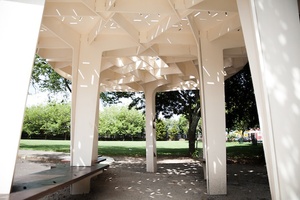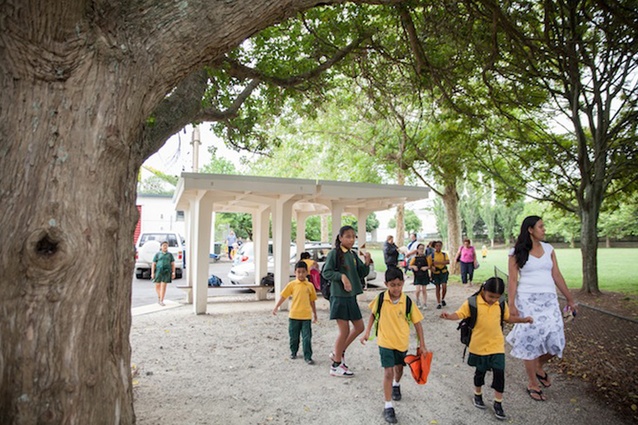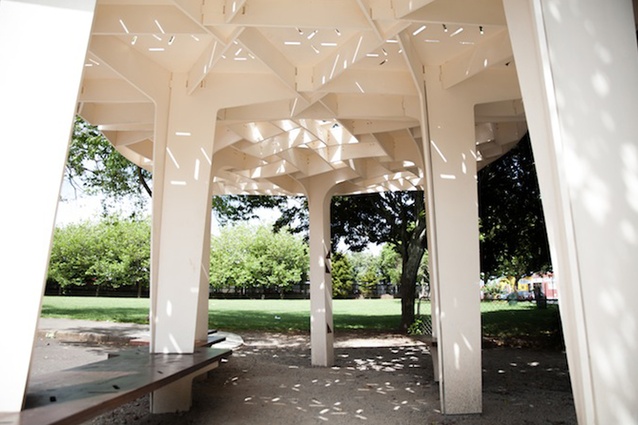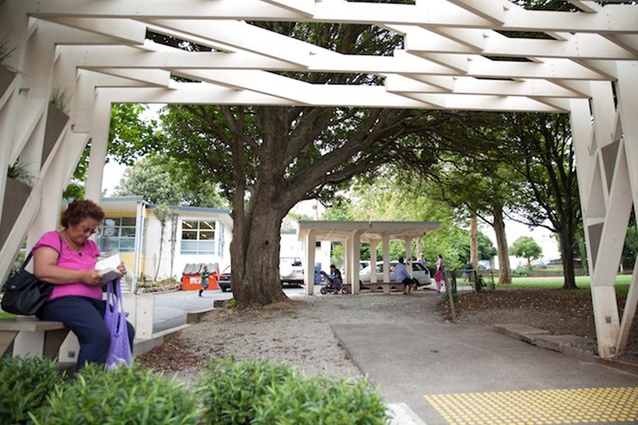Shelter me
Two seating shelters built for Auckland’s Onehunga Primary School, created as part of Master of Architecture (Professional) theses by Sam Wood and Yusef Patel, have received the 2014 Bentley Student Design Award.

This is the second year in a row that University of Auckland (UoA) students have picked up this prestigious global engineering award – last year it was won by Melanie Pau for an entrance structure at Onehunga Primary.
Sam and Yusef’s structures were each designed and constructed around a different theme. The Onehunga Primary has Green-Gold Enviro Schools status and Sam’s structure seeks to promote walking, cycling, and sustainable modes of transport. Yusef’s project was focused on developing innovative structural jointing methods adapted from the world of furniture design.
Produced under the supervision of professor Andrew Barrie and John Chapman, the shelters were a pro-bono project carried out with extremely limited funds. While the team had the use of the School of Architecture and Planning’s advanced design software and CNC milling machine, the structure had be able to be constructed from donated materials.
Another goal of the project was to develop the construction skills and structural knowledge of UoA architecture students, including a team of fourth year students completing a Timber Technology course, most of whom had little prior knowledge of construction.
The shelters’ modular structural systems consist of plywood members cut on the university’s milling machines but which slot easily together, meaning the assembly is simple and the community could be involved in the construction. The structures were assembled in the university’s workshops, transported to the site on the back of a truck and concreted into place on site as one piece.
To give the structures a unique identity and an identifiably Pacific flavour, they incorporate Pacific weaving and tapa patterns. Made entirely from donated plywood, the strutures have two key elements: a grillage structure of mutually supportive beams and a roof diaphragm that provides bracing.
The two structures follow different geometries – one orthogonal and the other triangular – but both emerged from the same structural concepts. Following a basic rule of “more stress = more structure”, all the beams in the structures are exactly the same length but are deeper or shallower according to the structural stresses occurring along each beam. The same principle has been followed with the diaphragms, reducing the number of openings where more bracing is required.












